I've ridden Honda's latest electric scooter with clever battery-swap technology – and it might just convince commuters to give up on petrol
The new CUV e: doesn't cost as much as you might think
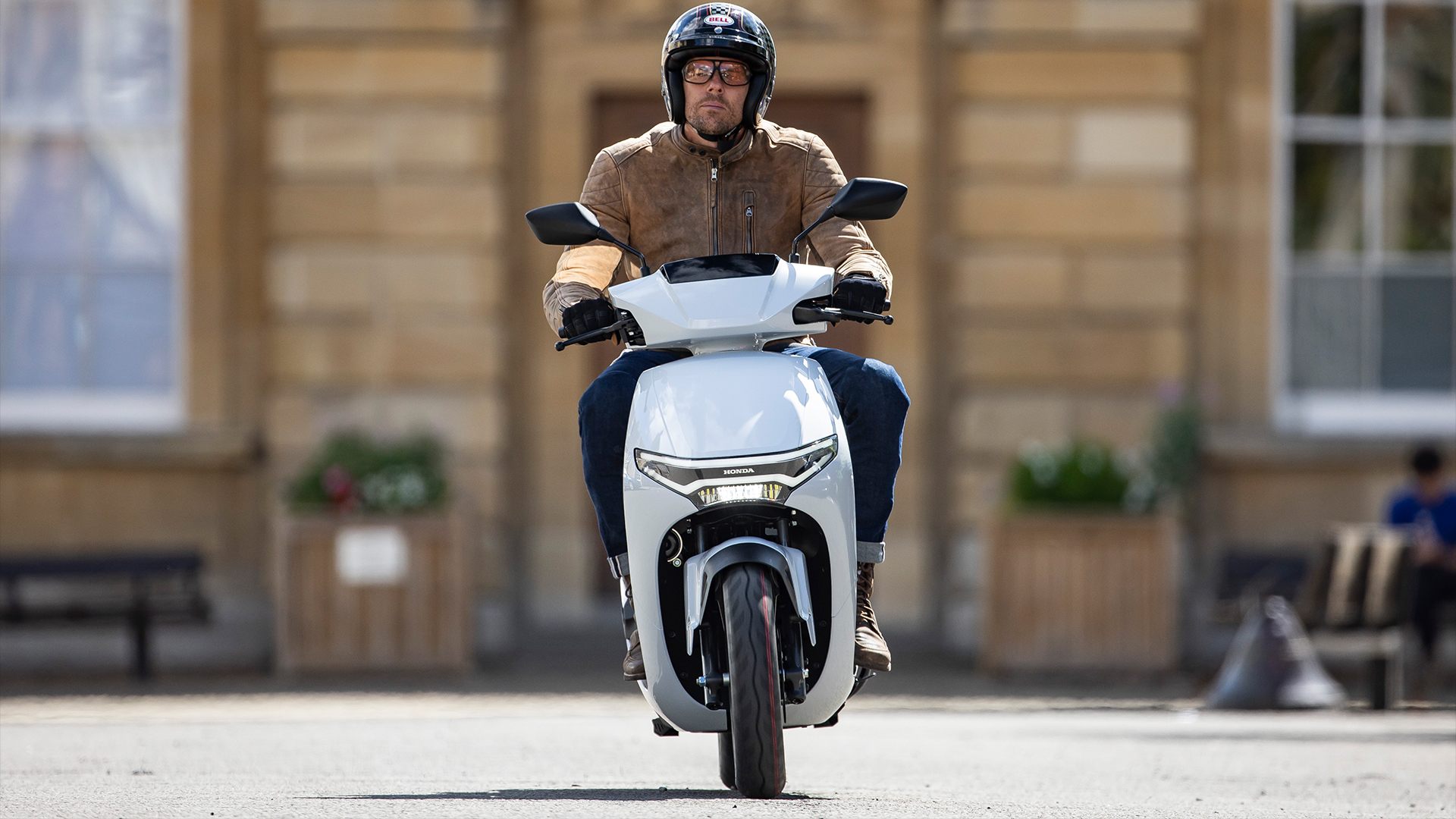
You’d be forgiven for forgetting that Honda has a long history with electric scooters, especially if you're reading this in Europe, the US or Australia.
Its original EM1 e: was met with a lukewarm reception at best, as the innovative battery subscription model never really took off. The little 50cc rival ended up costing too much and only managed around 25 miles on a single charge.
Of course, if you live in Asia or much of the Far East, you will be spoilt for choice when it comes to battery-powered Hondas, be it the hugely popular Activa e: model or the retro-tastic Dax e:, Honda Cub e: and electrified Zoomer e: that are, very irritatingly, currently only available in China.
But now, Honda wants to preach the benefits of zero emissions, low noise and almost zero maintenance electric motoring to the most of the world with its CUV e: (we'll call it the CUV e from here). It's one of the planet’s most grammatically-irksome vehicles but one that fuses innovative battery swap tech with a fuss-free, city-slicking ride experience that could convince petrol-lovers to maker the transition.
The Honda Mobile Power Pack e (HMPPe) sits at the very heart of the CUV e, with two of these 10kg, portable units powering the futuristic machine.
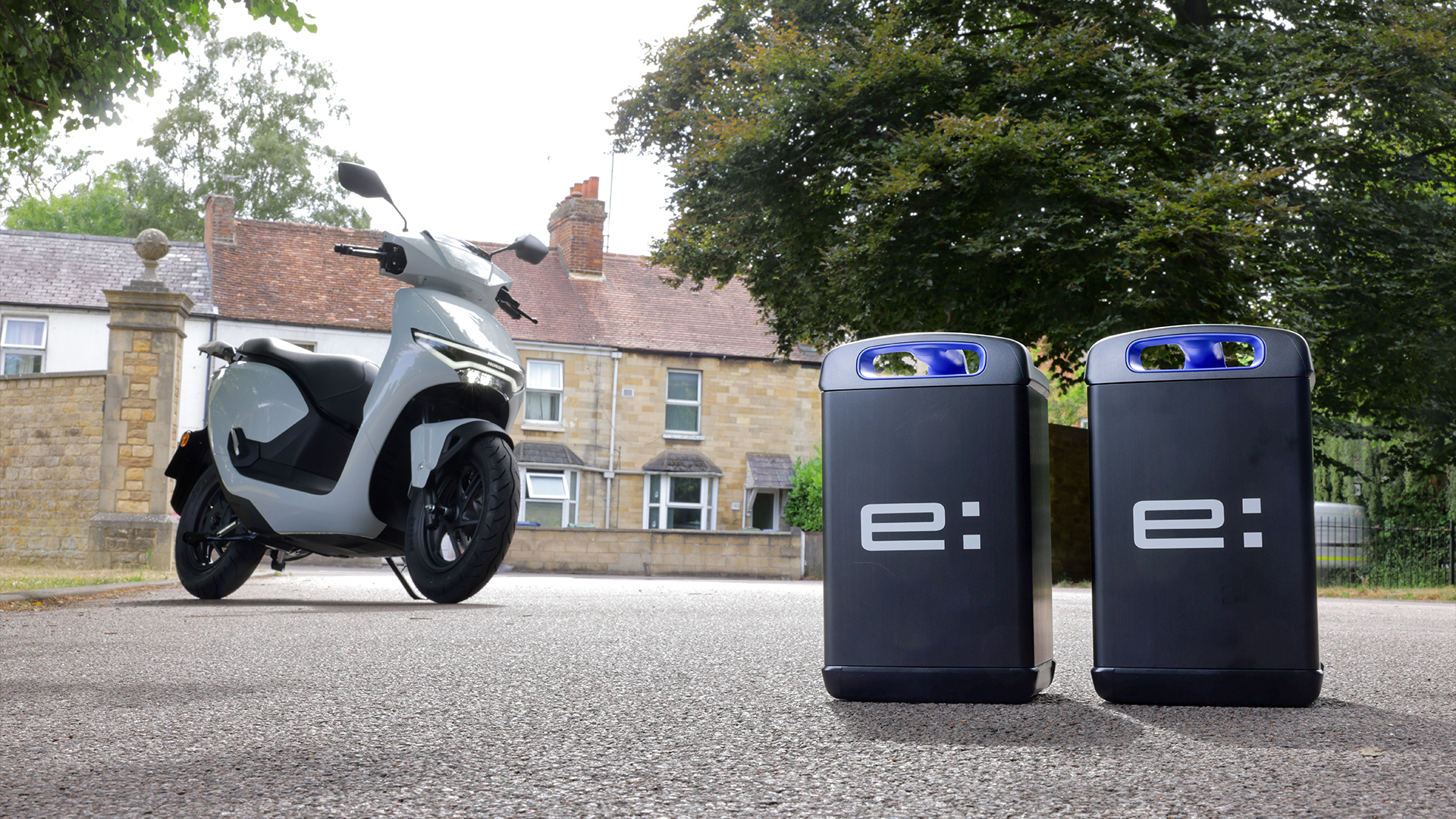
In many markets, this system is already popular, allowing riders to pull up to a dedicated Honda battery vending machine and swap out packs for a freshly-charged unit.
We will have to wait a little longer for this in much of wider Europe and the US, but the innovation means it is easy enough to remove the packs and charge them at home (even if that is a 12th-floor apartment) or under the desk at work.
Sign up for breaking news, reviews, opinion, top tech deals, and more.
What’s more, Honda says that the HMPPe packs can power a multitude of applications, with things like powerful construction site lights, diggers, rickshaws, boats and even camping equipment able to take juice from these portable units.
It won't be long before your daily commuter can also power your garden equipment, tools and off-grid power station.
Big deal, small prices
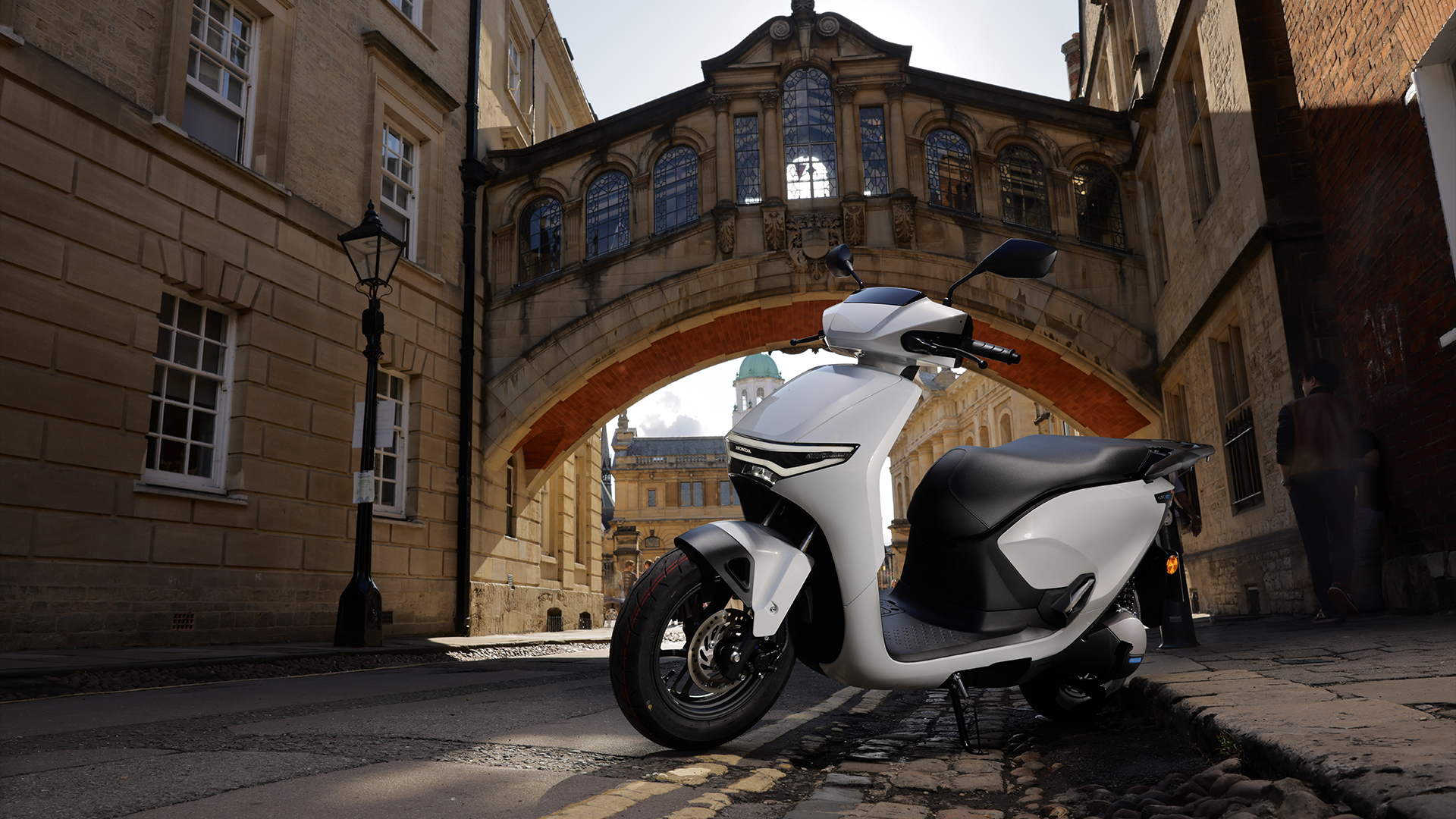
Before I get into the meat of this review, it is worth mentioning the price. We know, in the UK at least, that the Honda CUV e will cost £3,800 (around $5,100 / AU$7,780), which sees it directly rival Honda’s popular, petrol-powered PCX model.
It won't be long before your daily commuter can also power your garden equipment, tools and off-grid power station.
Granted, the range offered by Honda’s latest addition to the electrified scooter family is a mere 45 miles or thereabouts (a far cry from the PCX), but it is priced to rival some high-end eBikes, with even more favorable monthly finance deals like on the cards.
Yet, Honda hasn’t scrimped on the technology, with UK CUV e models all receiving the larger 7-inch digital display (a cheaper 5-inch version is available, apparently), which is operated by a clever joystick and button array on the left handlebar and connects to a smartphone via Bluetooth for nav, music and phone calls on the move.
More on that later, because Honda also throws in some bold, futuristic styling, the dual batteries (or HMPPe, to use the correct parlance) and two charging docks.
It’s possible to purchase more, should you want various places to top up, although pricing for the extra units is still to be decided. It is worth investigating, seeing as there is no way to charge on the machine.
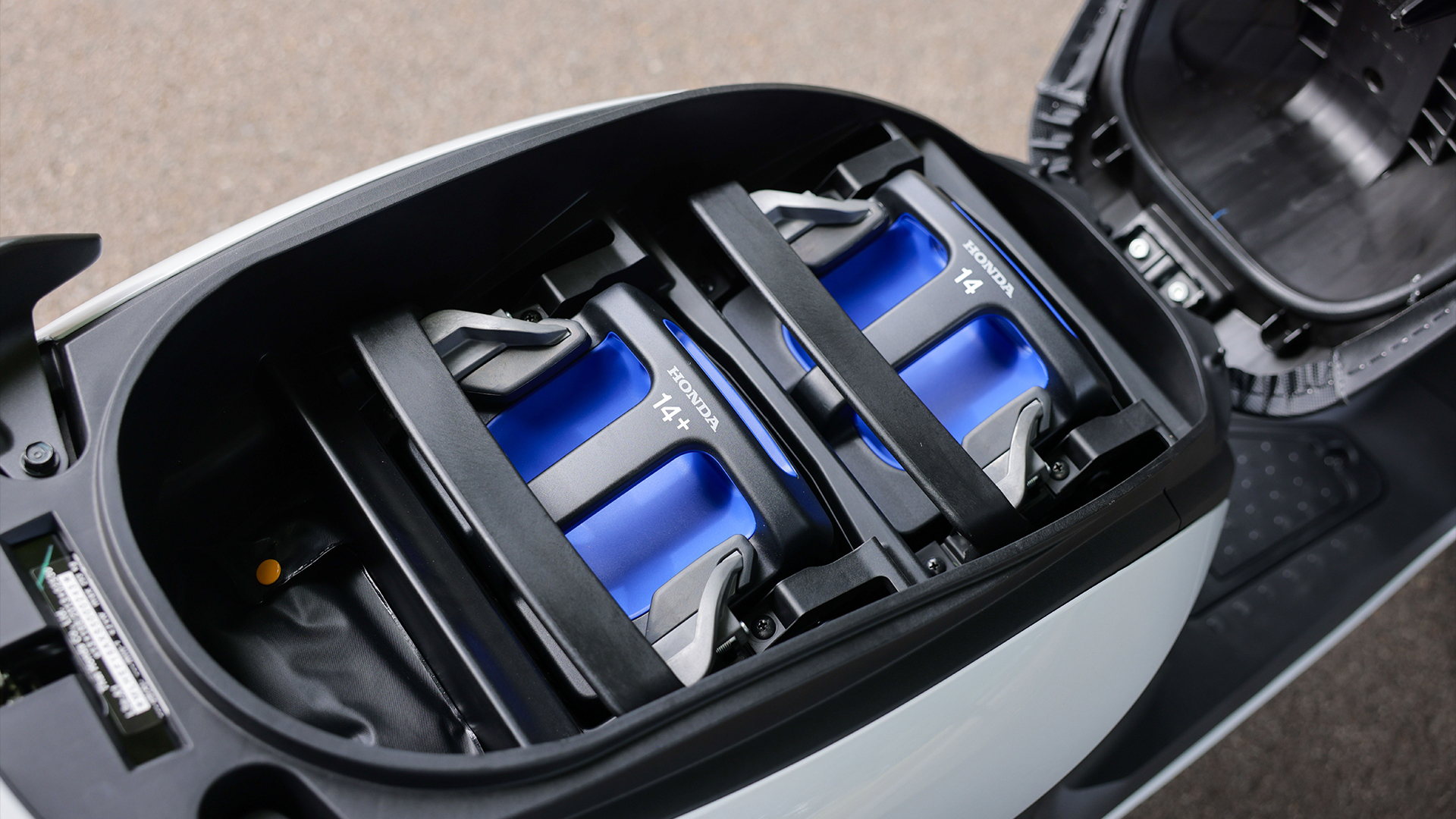
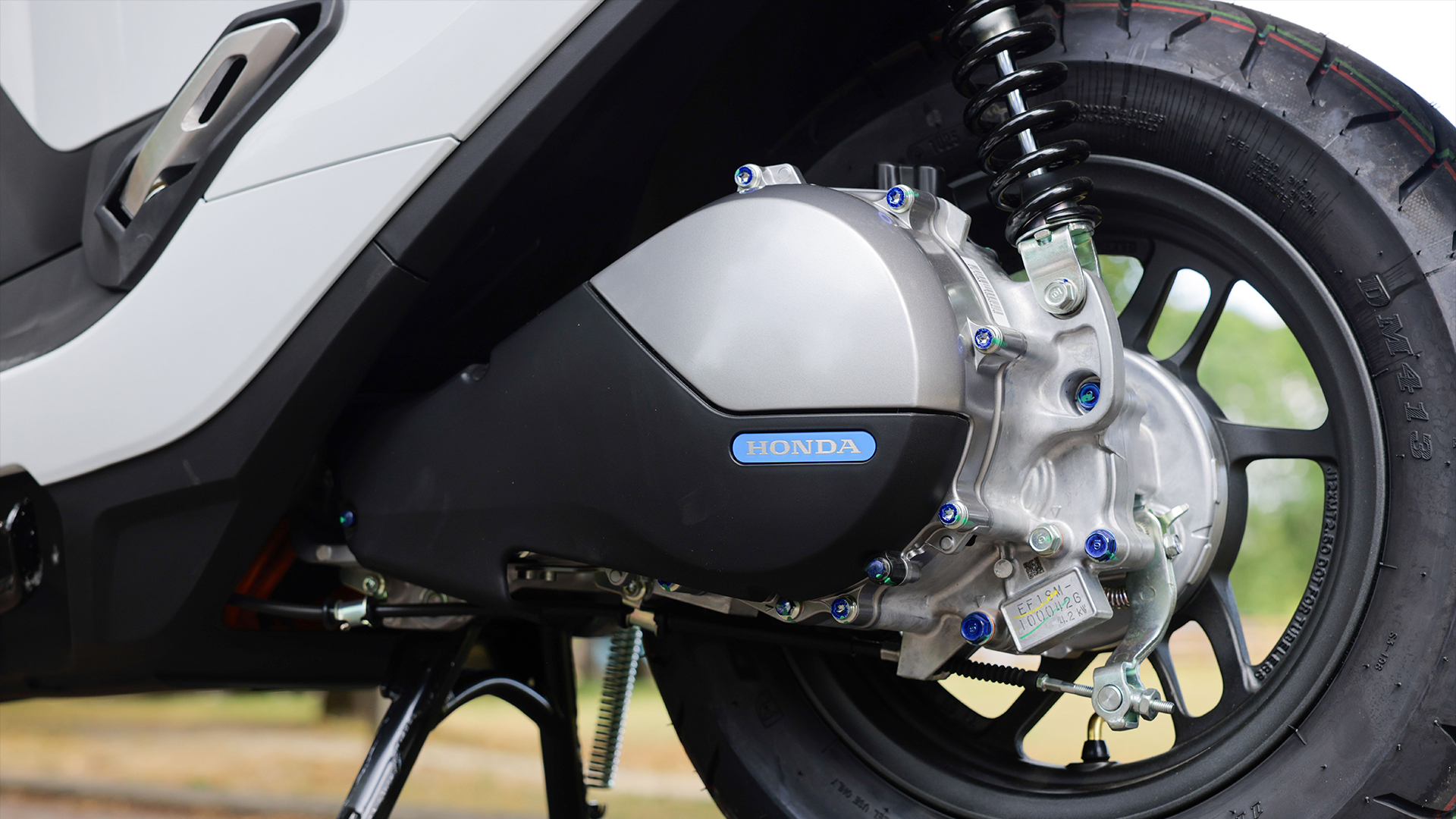
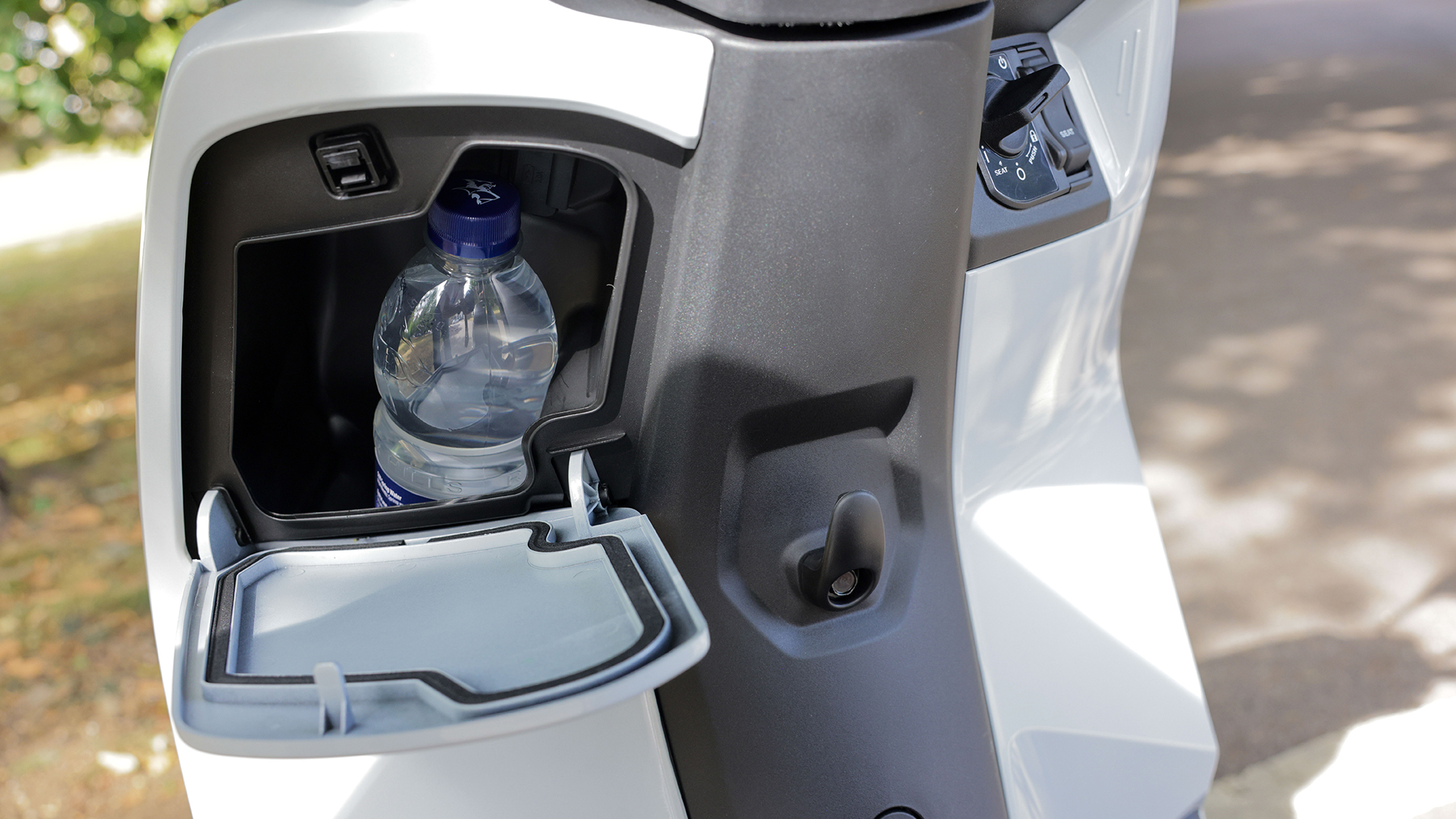
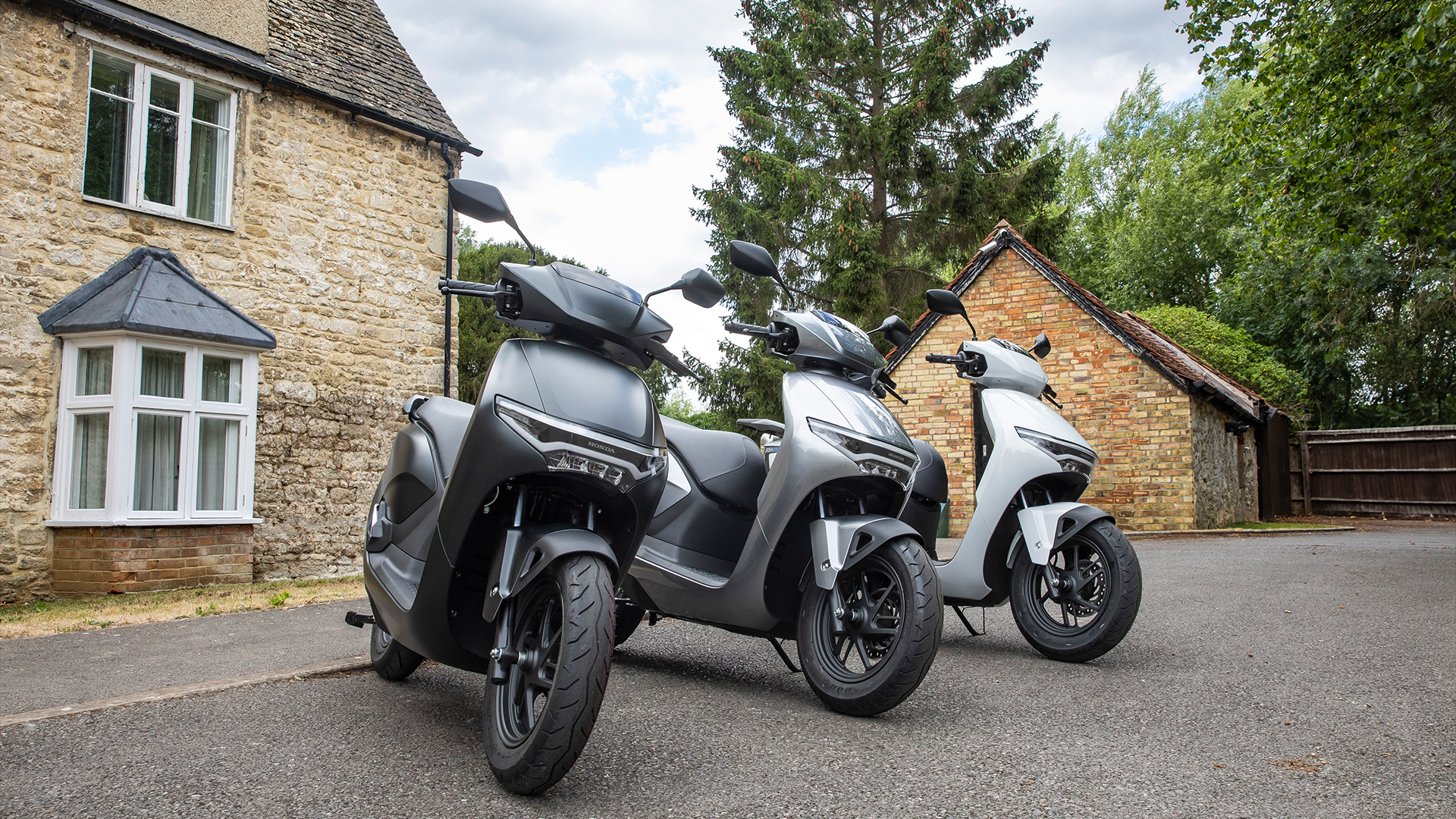
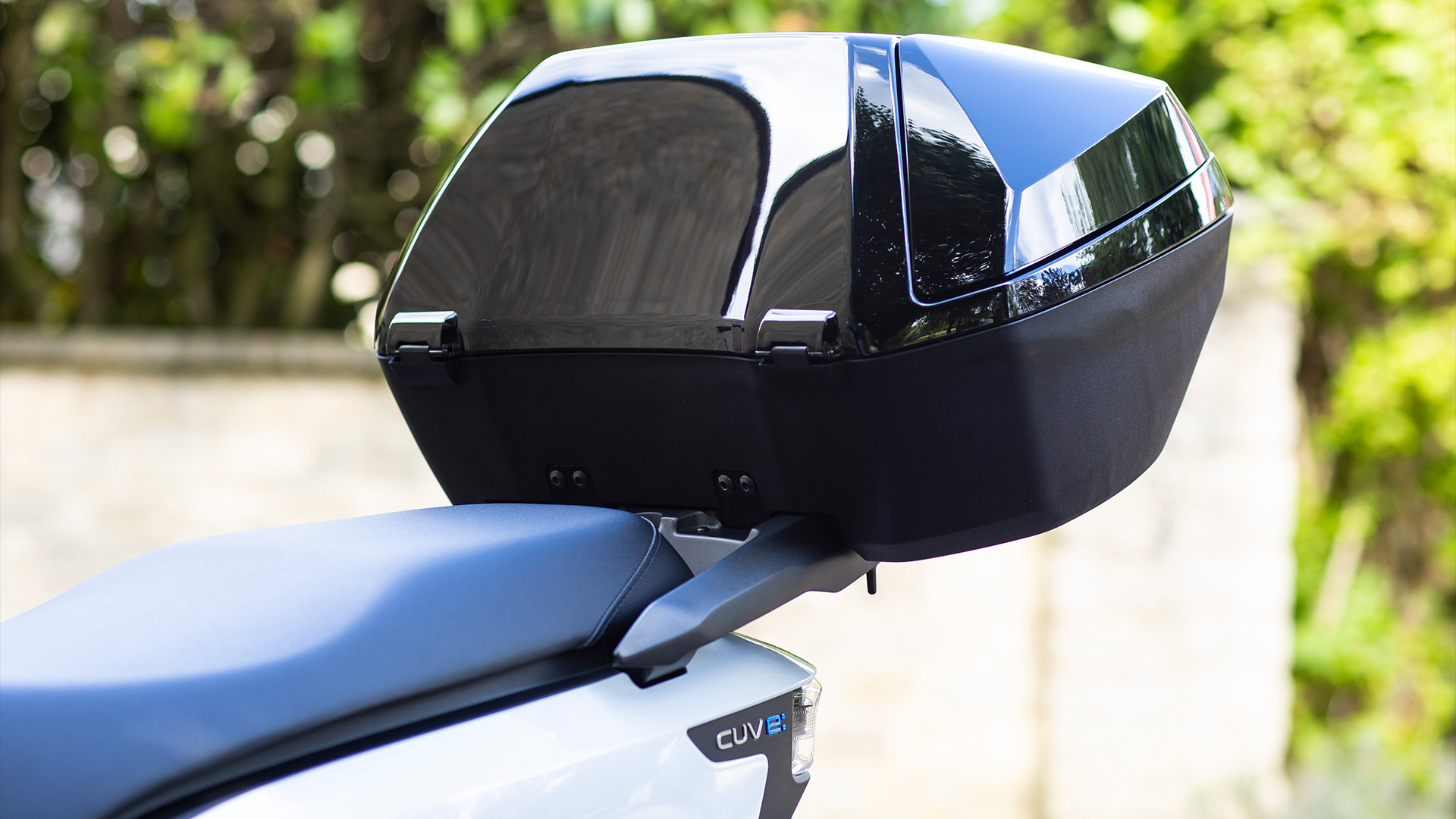
This rules out trailing a wire from a domestic plug socket and using the public charging network. Here, it’s all about removing the batteries and topping them up wherever convenient, which could be annoying for some.
What’s more, those charging docks aren’t smart in any way, so it is impossible to set them on a timer to charge at the cheapest, off-peak tariffs, for example.
That's something that likely could be done with a little Honda coding expertise if you could plug the bike directly into a power source.
Simple but effective
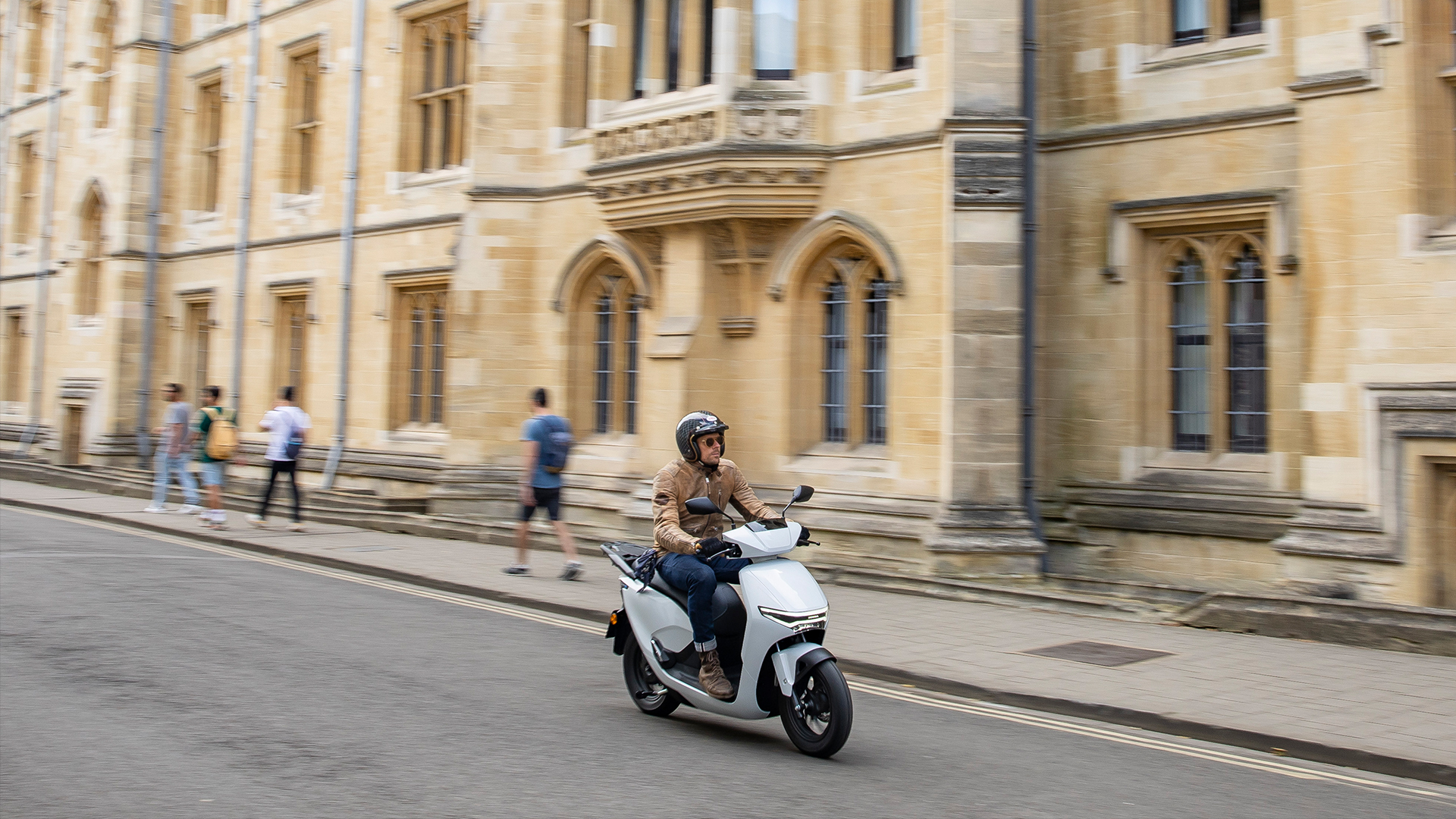
It’s important to frame much of this review around the surprisingly reasonable price, because very little in the electric two-wheel world gets close, especially when you consider this is from a reputable, engineering-first brand like Honda… not some unknown start-up.
There will be many naysayers quick to jump on the fact that it’s possible to purchase a very efficient, very clean petrol scooter for similar money, but it misses the point.
Honda wants e-mobility to be part a big of its future mix, with lots more to come in the near future, and feels the ease of use and ultra low-maintenance requirements could be a big draw for many new riders.
It is difficult to argue, because riding the CUV e is about as easy as it comes. A little transponder key fob lives in your pocket, so starting it is as simple as twisting a dial and holding the ignition button.
There are three riding modes: Econ, Standard and Sport, with the former proving laughably sluggish but best for eking out battery life, while the latter is perfect for zipping in and out of busy traffic.
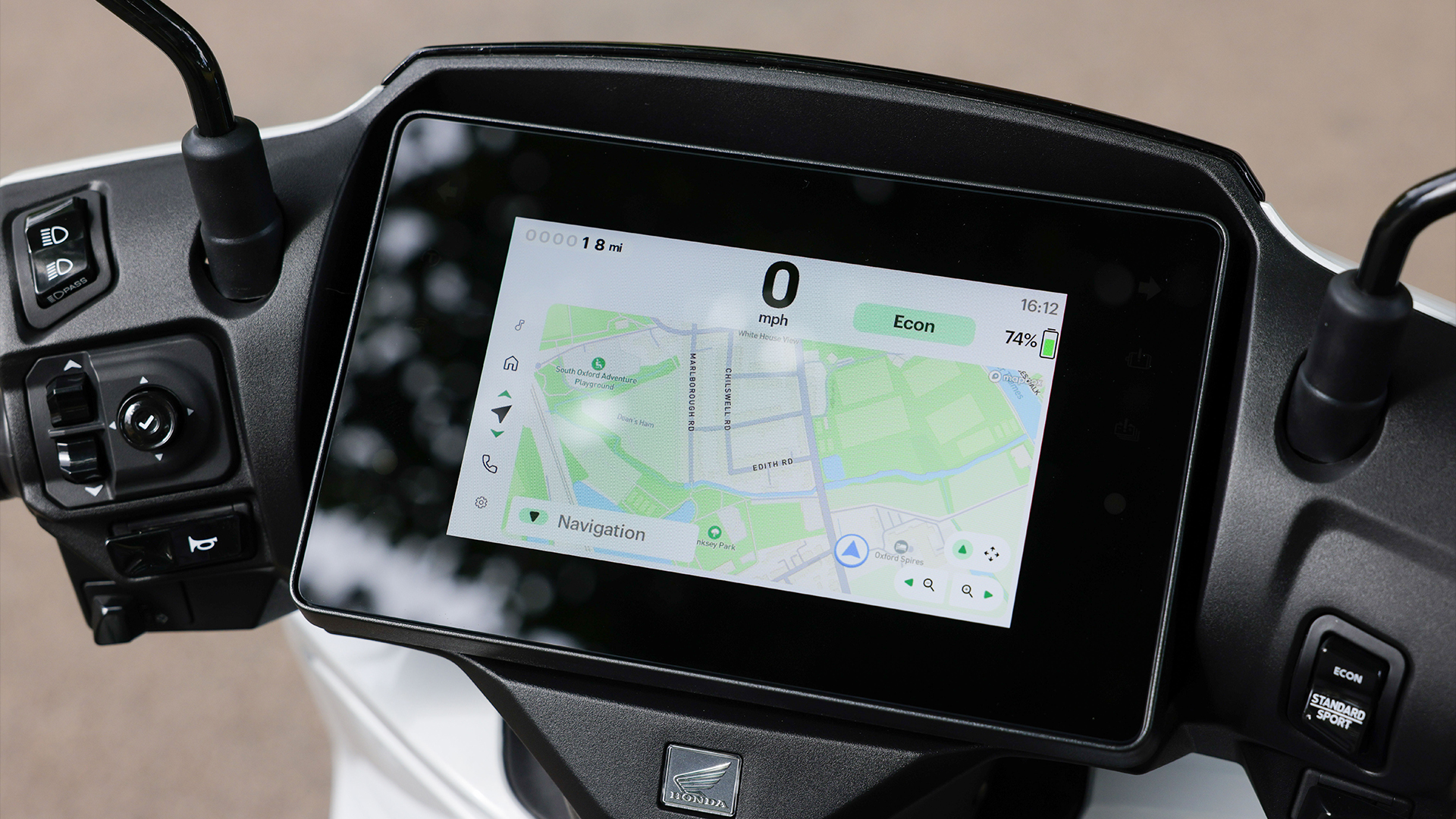
The specs claim it can manage the 0-100 meter sprint in just 8.3 seconds, which means it would beat Usain Bolt in a drag race, and it doesn't run out of puff until you hit around 50mph.
Honda engineers have done an excellent job in mimicking the general riding experience of a petrol-powered rival
Honda engineers have done an excellent job in mimicking the general riding experience of a petrol-powered rival, so there’s a reassuring touch of dive as you throttle off to represent engine braking, the throttle itself is beautifully linear and the brakes powerful but nicely weighted.
It rides like any modern step-through, which is to say it won’t set many pulses racing, but it is a perfectly quiet and comfortable way to get from A to B. This is made even more tranquil by the lack of awful droning noise and heat emanating from engine and exhaust.
Rolling on tiny 12-inch rims and packing fairly basic telescopic suspension at the front and a small mono shock set-up at the rear means it does get a bit bumpy on scarred road surface, but then what doesn’t at this sort of price?
Ample technology

There is a small stowage area beneath the handlebars that houses a USB-C charging slot and a neat place to stash a smartphone. It’s also possible to tuck the key in here, if you don’t like it digging into your leg.
It takes seconds to sync Honda’s electric scooter up with a new phone, and from there users can then make the most of the marque’s RoadSync smartphone app, which allows for route-planning, the pairing of a Bluetooth music device and viewing of general scooter information.
I asked one of Honda’s engineers why the company didn’t just opt for Android Auto or an Apple CarPlay solution and the answer was simple: cost.
Apparently, the tech giants charge an arm and a leg for licensing and it wouldn’t have made financial sense.
The Honda CUV e: infotainment system in action pic.twitter.com/D2CGYxQFh4July 25, 2025
Instead, mapping is provided by MapBox and is kept up-to-date via any updates to the RoadSync app.
It’s very easy to use and directions are crystal clear on Honda’s sharp, seven-inch display. There’s little in the way of Waze-like live traffic or smart routing, but most scooters don’t get bogged down by jams anyway.
Also, the display isn’t touch sensitive, but that’s probably for the best, considering gloved hands and inclement weather can often render these useless. Rather, a small joy stick and a couple of buttons mounted on the left hand-side of the handlebars make the entire system dead simple to navigate.
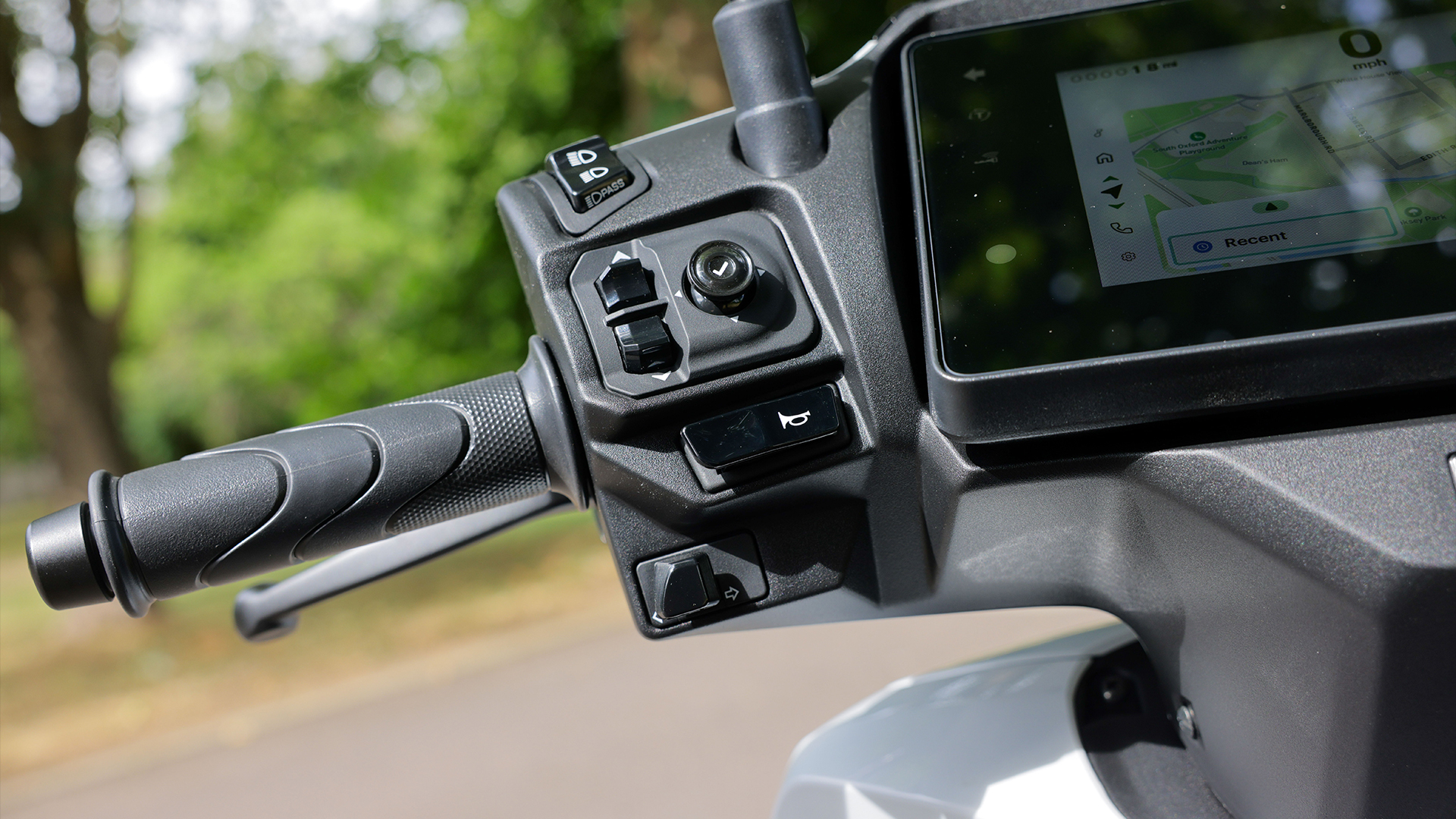
Routes can be selected from a list of favorites or previous entries, tracks can be skipped with a slide of the joystick and calls answered or rejected with a press of a button.
You’ll need a helmet-mounted Bluetooth headset to make the most of this, but any savvy, city-dwelling scooter commuter probably already has one.
All things considered, it’s a very well thought-out package that’s easy enough to ride, even for complete novices.
The thought of lugging 20kgs of battery packs in and out of the home or office might not appeal to some, while the same HMPPe bricks take up all of the under-seat stowage space, meaning an additional top box has to be purchased to store a helmet or shopping bags.
But then, many urban riders also find it difficult to charge an EV, with those living in apartments or busy residential areas lacking the garage or power source to do so.
On top of this, the 50-odd mile range and 51mph top speed (I managed 59mph on one stretch) could also prove potential barriers for buyers — a 160-minute wait for a 25-75% charge means Dumb & Dumber-style road trips are out of the question.
But for those with a predictable and regular commute, or simply shorter distances to cover, Honda’s CUV e: makes a very convincing case… both practically and, in perhaps an electric vehicle world first, financially too.
You might also like

Leon has been navigating a world where automotive and tech collide for almost 20 years, reporting on everything from in-car entertainment to robotised manufacturing plants. Currently, EVs are the focus of his attentions, but give it a few years and it will be electric vertical take-off and landing craft. Outside of work hours, he can be found tinkering with distinctly analogue motorcycles, because electric motors are no replacement for an old Honda inline four.
You must confirm your public display name before commenting
Please logout and then login again, you will then be prompted to enter your display name.